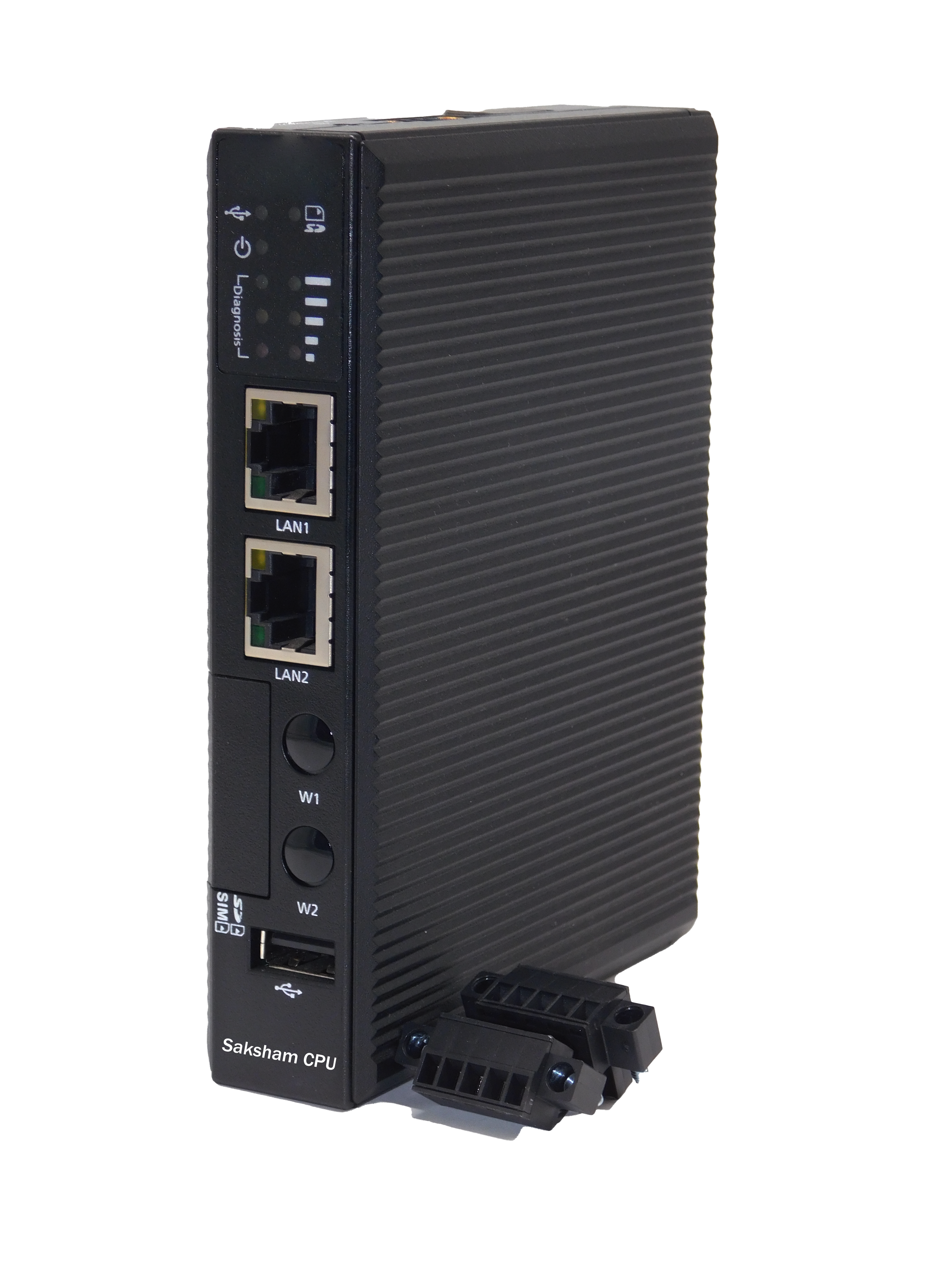





Item No:
SAKSHAM CPU-UG
Rack and Module
No. of Module Per Rack
No. of Rack
No. of Module
Interface Type-1
Ethernet(RJ-45)
No. of ports
100 MBPS
Autonegotiation
Autocrossing
Industrial Ethernet Status Led
Interface Type 2
Serial
Connection
Protocols
Ethernet/IP
EtherCAT
Modbus TCP/IP
Profinet IO Controller
OPC-Ua
Media Redundancy
Clock
Type
Operating Hours Counter
Clock Synchronization
Supported
In industrial automation, the programmable logic controller (PLC) relies on its central processing unit (CPU), the system’s brain, to ensure precise and reliable control. The CPU executes user-defined logic, interprets instructions, reads inputs, processes data, and generates outputs for actuators and other devices. It manages memory for programs, data, and settings, preventing corruption while supporting efficient operation. Modern CPUs enable seamless communication with networks, devices, and HMIs, handle protocols, and perform self-diagnostics. Their processing power, memory, and advanced features are essential for performance, reliability, and productivity.

This package includes complete SAKSHAM Engineering Software and SAKSHAM SCADA Runtime Software projects for SAKSHAM PLCs, enabling quick deployment and intuitive control. It includes detailed documentation for I/O mapping, installation, troubleshooting, along with TPW-specific libraries and runtime tools for seamless integration.

This package includes the SAKSHAM Engineering Software Project for SAKSHAM PLCs, along with ready-to-deploy automation code. The package provides TPW-specific libraries and runtime tools for smooth integration and operation. It also includes detailed documentation for I/O mapping, installation procedures, and troubleshooting to ensure seamless deployment and maintenance.

This package includes the SAKSHAM SCADA Runtime Software Project with user-friendly visualizations for real-time monitoring and control. It also comes with complete documentation including screen layouts, configuration procedures, and troubleshooting guides for smooth installation and reliable operation.

This package includes the SAKSHAM SCADA Runtime Software Project with intuitive, ready-to-use visualizations for real-time monitoring and control. It ensures seamless integration with SAKSHAM PLCs, offering an efficient and user-friendly interface design.

SAKSHAM Library offers a comprehensive set of pre-built code libraries, reusable templates, configuration guides, and integration examples. It simplifies development, accelerates project deployment, and ensures consistency and reliability across SAKSHAM PLC applications.

The SAKSHAM Manual provides complete technical documentation, I/O mapping sheets, installation guides, and troubleshooting checklists. It ensures easy setup, smooth operation, and reliable maintenance support for SAKSHAM PLC systems.
Download